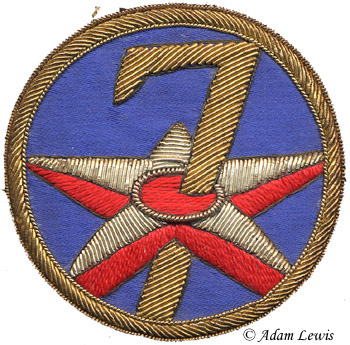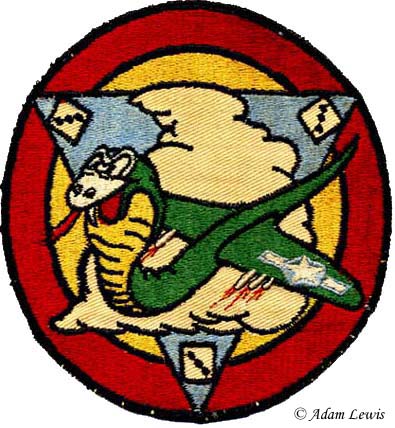To see the P-47N pictures click here.
The Thunderbolt made a famous mark in the European Theatre as the P-47D. Less well known is the P-47N that saw action against Japan. It was designed specifically for the Pacific Theatre where long range flights over water were a necessity. With its squared-off wingtips and extra internal fuel tanks it had a range of 2300 mi. More than 1,800 Ns were built.
in the European Theatre as the P-47D. Less well known is the P-47N that saw action against Japan. It was designed specifically for the Pacific Theatre where long range flights over water were a necessity. With its squared-off wingtips and extra internal fuel tanks it had a range of 2300 mi. More than 1,800 Ns were built.
One of the late-war P47N drivers was 1st Lt Oscar F. Perdomo (click here). He was assigned to the 464th FS on Ie Shima and on August 13, 1945 his unit was doing a sweep over the Korean peninsula. They encountered a bunch of Japanese fighters and a melee ensued. Lt Perdomo shot down 4 Oscars and a Willow (a biplane trainer) as confirmed by his gun camera footage. Thus Lt Perdomo became the last ace of the war and the last ace in a day as Japan surrendered and hostilities ceased a few days later. His parents were from Mexico and he is listed as an Hispanic American Army Air Forces Hero of World War II.
Near the end of the war several P-47N units were based on Ie Shima and Okinawa including the 333rd FS, 318th FG, 7th Air Force. John Payne has a site for his Dad's P-47N from the 333nd....get there by clicking here. The model I built is from that unit.
units were based on Ie Shima and Okinawa including the 333rd FS, 318th FG, 7th Air Force. John Payne has a site for his Dad's P-47N from the 333nd....get there by clicking here. The model I built is from that unit.
The Academy/Minicraft 1/48th scale kit was released in 1995. It's a good kit that goes together easily and has delicately engraved detail. I added only the fuel lines from the under wing tanks to the pylons.
Since this is a natural metal finish extra care is needed to remove all the surface flaws. My favorite techniques is to wet sand with a grit in the range 1000 - 2000 followed by a cotton cloth which has been soaked in Brasso and allowed to dry. You can get a mirror finish on the plastic but it leaves some dust behind. Next, wash with soap and water to remove all the grit and debris from the panel lines and the aforementioned dust. At the time I built this my favorite aluminum finishes were Spray'N'Plate and Model Master Metalizer Lacquer. I still have 2 jars of 'hard non-buffing' Spray'N'Plate from a 1983 trip to San Antonio Hobbies that are good. The stuff works great and was used here.
Markings are from Super Scale sheet 48-490 "2 Big and Too Heavy/Short Snorter". The sheet has the bold black stripes for the tail if you want to do the later version (see John Payne's page). I chose the early version with the yellow-colored tips trimmed in black. The decals compare well to the color photos in Jeffrey Ethell's World War II Nose Art in Color. Both sides are shown on pp. 21-22. The Super Scale sheet is slightly less graphic in some of the specific details than the real thing. Whether to get past the censors or for the sake of civility I don't know.
 From the artwork it's obvious what's 2 big and too heavy, but I didn't understand the meaning of the Short Snorter. Is it a 1 foot high razorback hog? Vic Tatelman gave me the explanation. A Short Snorter consisted of trading currency notes with others and taping them together to get a string of currency. Every time you visited a new country, for example, you would add a local currency to the string. Typically the owner would autograph it. Vic has seen Short Snorters several feet long. I wonder how that phrase got associated with that item?
From the artwork it's obvious what's 2 big and too heavy, but I didn't understand the meaning of the Short Snorter. Is it a 1 foot high razorback hog? Vic Tatelman gave me the explanation. A Short Snorter consisted of trading currency notes with others and taping them together to get a string of currency. Every time you visited a new country, for example, you would add a local currency to the string. Typically the owner would autograph it. Vic has seen Short Snorters several feet long. I wonder how that phrase got associated with that item?
I think the 'Jug' is much beloved by the pilots who flew it. After reading the succinct list of P-47 attributes written by former P-47 pilot Rip Collins (click here) I can appreciate why it was held in such high esteem.